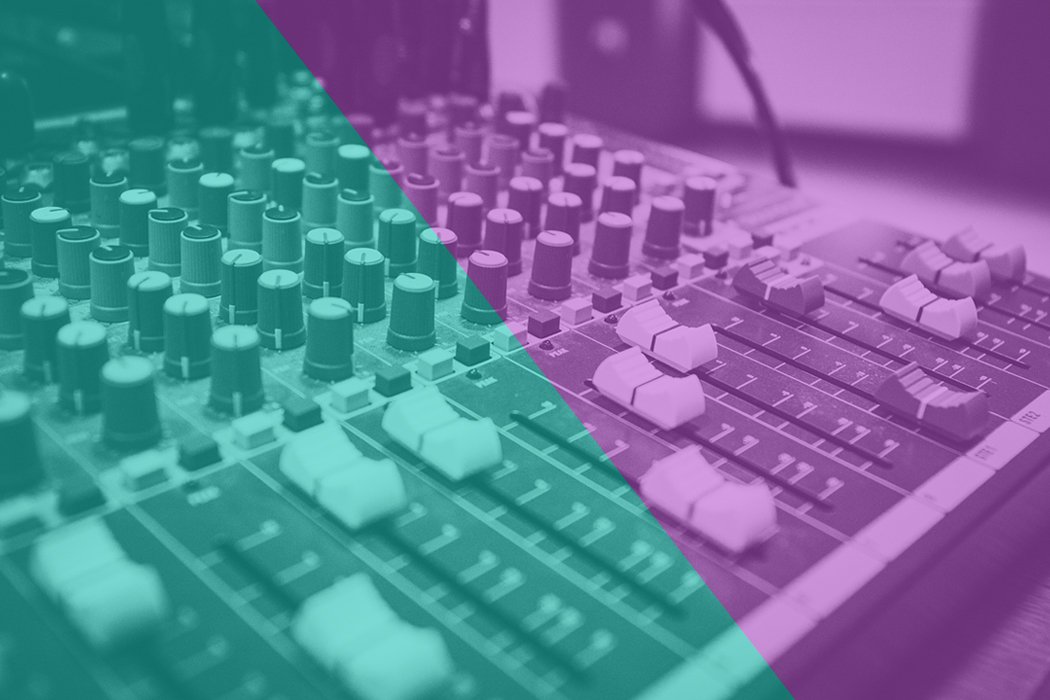
+ Learning to record and mix at home? Check out Soundfly’s acclaimed online courses on mixing, production, and beat making — Subscribe for unlimited access.
Let’s not beat around the bush. You’re probably stuck at home right now due to the virus whose name I bear not repeat. So maybe “on the go” is an ironic thing to say, but the concept of mixing outside of the normal studio setting is what we’re talking about here.
You can use some of these tips to help you get quality mixes while you’re stuck at home, and even if your actual studio is at home, once the world is open again, you can take your tracks out to all the coffee shops, park benches, and hotel rooms you can’t go to now.
So, without further ado, let’s talk about six tips for mixing “on the go.”
Listen More Ways
The fact is if you’re mixing on the go, you’re probably doing so in headphones. If not headphones, you’re listening in rooms that aren’t treated well. If you’re at home, you could start treating the room you’re in, but if you don’t want to go down a home studio rabbit hole, or if you’re actually out in the world, consider various listening devices.
Try listening to rough mixes on your main headphones, then your laptop speakers, then a set of earbuds. Try exporting the mix to an mp3 and listening with your phone. Or connect an old boom-box with an aux input. Listen on your TV. Listen in your car. Take notes everywhere you listen so you can make adjustments.
Believe it or not, this was common practice even back when everything was mixed in big fancy commercial studios.
Small Tweaks
When you make adjustments from listening to various speakers and devices, make them subtle. If you hear too much hi-hat on the laptop but it sounds fine in the headphones, pull it down a bit so it starts to sound better on the laptop but doesn’t get lost in the headphones.
Remember the name of the game is to get your mixes translated to various devices and sounding good on each, so making subtle tweaks is usually best. It’s also better in general when you’re not in the best circumstances to make small tweaks, so you protect yourself from overwhelming any channel or signal.
+ Learn production, composition, songwriting, theory, arranging, mixing, and more — whenever you want and wherever you are. Click here for unlimited access!
Develop Over Time
Since you have a DAW and you can save mixes, and even save alternate mixes, you don’t have to do it all at once. You can use this to your advantage to let a song develop over time, rather than trying to get it all right in one go.
This evolution of a mix over time is sometimes the best way to get past the limitation of being in less than ideal mixing environment.
Get Feedback
Since you do have the luxury of letting a mix develop over time, take advantage of other people’s listening environments (and ears!) by getting community feedback. Take notes and try to make subtle adjustments based on what other people hear. Usually, you can implement everything everyone says in a subtle way and strengthen your mix over the course of just a little time.
These folks don’t have to be experts either. A healthy dose of critical feedback can really give you the best beat on how your sound is landing.
Use Reference Tracks
Starting off a session by listening to a few professional reference mixes that are in the ballpark of the sound you want is always a good idea, but it’s especially necessary when you’re in unfamiliar territory.
You still won’t be able to hear sub bass your headphones or laptop speakers can’t reproduce — or the shimmering highs of today’s electronic pop hits — but you will be able to calibrate your listening so you can more quickly get the sound you’re looking for. Come back to your references periodically, especially if you’re working in headphones, to keep your perspective right.
Corrective Software
Finally, you may be able to improve your ability to mix remotely with the use of corrective software such as SonarWorks. Although not the only game in town, SonarWorks is the best at calibrating headphones so that you can get a reasonable, even reliable, sound to mix using.
Other calibration packages include IK Multimedia’s ARC, ToneBoosters, Dirac, and Waves NX. All these packages are simply filters you insert between your master buss and audio output, which eq the sound according to a headphone or room profile, evening out the sound for a more accurate mix. You may be surprised at how game-changing this can be.
Go Forth… Or Stay Home
Whether you’re languishing in a house with no studio, or you’re living in the post COVID-10 utopia of travel and socialization, you can get a great mix on the go with your laptop, DAW, and a little bit of tenacity and inventiveness. And you can always check your mixes later at the real studio to see how well you did.
Using some of the tips here, we hope you’re pleasantly surprised!
Don’t stop here! Continue learning about mixing, audio engineering, electronic music recording, and DIY home production, with Soundfly’s suite of in-depth online courses, including Faders Up: Modern Mix Techniques. Subscribe for unlimited access here.




